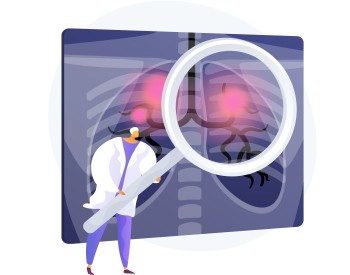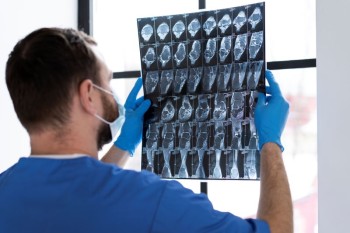
CT Pulmonary Angiography is a specialized diagnostic procedure that utilizes computed tomography to visualize the pulmonary arteries within the lungs.
CT Scan Pulmonary Angiography (CTPA) in India with Cost
CT Pulmonary Angiography (CTPA): Navigating the Depths of Pulmonary
Vascular Imaging
Introduction
Unlocking the Mysteries of CT Pulmonary Angiography
CT Pulmonary Angiography (CTPA) is a sophisticated medical imaging technique designed to explore the intricate vascular network within the lungs. This comprehensive guide aims to provide insights into the significance, procedure, and applications of CTPA, shedding light on its role in diagnosing pulmonary vascular conditions.
Understanding CTPA
What is CT Pulmonary Angiography?
CT Pulmonary Angiography is a specialized diagnostic procedure that utilizes computed tomography to visualize the pulmonary arteries within the lungs. It is primarily employed to detect blood clots or other vascular abnormalities affecting the pulmonary circulation.
The Significance of CTPA
Detecting Pulmonary Embolism CTPA is a frontline tool in the detection of pulmonary embolism, a potentially life-threatening condition characterized by blood clot(s) obstructing the pulmonary arteries. Accurate and timely diagnosis is critical for effective intervention.
Assessing Pulmonary Vascular Conditions
Beyond embolism, CTPA is instrumental in assessing various pulmonary vascular conditions, including pulmonary hypertension and vascular malformations, providing a holistic view of the pulmonary vasculature.
The Procedure: A Step-by-Step Guide
Patient Preparation
Patients undergoing CTPA typically need to fast for a few hours before the procedure. The medical team may inquire about allergies and relevant medical history.
Contrast Injection
A contrast dye is injected into the patient's veins to enhance the visibility of blood vessels during imaging, ensuring detailed and accurate results.
Image Acquisition
The CT scanner captures multiple cross-sectional images of the pulmonary arteries, which are then reconstructed to create detailed three-dimensional representations.
Applications of CTPA
Diagnosing Pulmonary Embolism
CTPA is unparalleled in diagnosing pulmonary embolism, providing high-resolution images that reveal the presence, location, and extent of blood clots within the pulmonary arteries.
Evaluating Pulmonary Hypertension
CTPA is crucial for assessing pulmonary hypertension, helping clinicians understand the extent of vascular remodeling and guiding treatment strategies.
Advantages and Considerations
Advantages of CTPA Rapid and Accurate Diagnosis
CTPA offers a rapid and accurate diagnosis, enabling prompt medical intervention and potentially saving lives.
Non-Invasiveness
Compared to traditional pulmonary angiography, CTPA is less invasive, reducing patient discomfort and the risk of complications.
Considerations and Precautions
Radiation Exposure
While CTPA is invaluable in diagnosis, the exposure to ionizing radiation is considered. The medical team carefully evaluates the risks and benefits for each patient.
Conclusion
In conclusion, CT Pulmonary Angiography stands as a pivotal tool in pulmonary vascular imaging, providing detailed insights into conditions affecting the lungs' blood vessels. From diagnosing embolism to evaluating pulmonary hypertension, CTPA plays a crucial role in enhancing patient care.
FAQs: Demystifying CT Pulmonary Angiography
1. How long does a CTPA procedure take?
The procedure typically takes around 15 to 30 minutes, depending on the patient's condition.
2. Can CTPA detect conditions other than pulmonary embolism?
Yes, CTPA is versatile and can identify various pulmonary vascular conditions beyond embolism.
3. Are there any side effects of the contrast dye used in CTPA?
Some patients may experience mild side effects, such as a warm sensation or a metallic taste, which usually subside quickly.
4. Is CTPA suitable for pregnant women?
The use of ionizing radiation raises concerns during pregnancy, and alternative imaging methods may be considered.
5. How often is CTPA performed for follow-up examinations?
Follow-up CTPA examinations are conducted as needed, depending on the patient's medical history and response to treatment.
6. Can CTPA detect pulmonary vascular malformations?
Yes, CTPA is effective in identifying various vascular anomalies, including malformations, aiding in their characterization and management.
7. What is the typical recovery time after a CTPA procedure?
Most patients can resume normal activities immediately after the procedure, although it's advisable to avoid strenuous activities for a short period.
8. Are there age restrictions for undergoing CTPA?
CTPA can be performed on individuals of various age groups, with the decision based on the patient's health condition and the necessity of the examination.
9. Is sedation required for CTPA?
No, sedation is generally not required for CTPA. The procedure is well-tolerated by conscious and cooperative patients.
10. How often is CTPA used for routine screening?
CTPA is not typically used for routine screening due to the exposure to ionizing radiation. It is employed when there is a specific clinical suspicion or need.
(0)
Login to continue



